
Article contents

There’s no forced retirement age, but when it comes to pensions, you’ll be able to start taking the State Pension from age 66, but rising to 67 in 2028, and later 68. With private pensions, you can start taking these from 55, but rising to 57 in 2028. Although we recommend keeping your pension growing bigger until you actually retire!
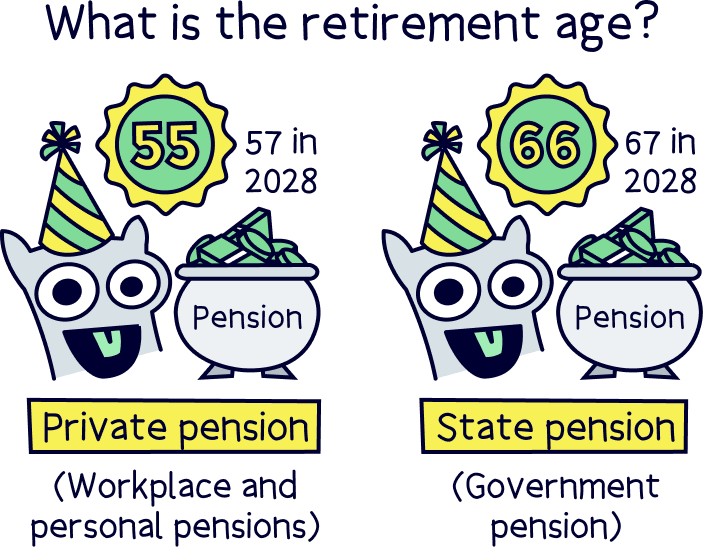
Keen to retire but not sure actually when you can? Don’t worry, we’ve got you covered. We’ll run through the retirement age for the different pension types and which age might be best for you to retire, based on your own circumstances.
The main thing to know is there’s no forced retirement age, you can work for as long (or little) as you like – or more specifically, when you can afford to retire!
The confusing bit though, is that with pensions, there are different retirement ages for different types of pensions. Often, when people talk about the retirement age, they are referring to when you can claim the State Pension, (State Pension age), which is the government pension, but there’s also private pensions, which are pensions in your name, private to you. We’ll cover both.
By the way, if you’re already planning to save more with a private pension (personal pension), check out PensionBee¹ – they’re 5* rated, have low fees and a great track record of growing pension over time. Here’s our PensionBee review to learn more. You could also compare the best pension providers.
You can claim the State Pension when you reach the State Pension age, which is currently 66, however this is due to rise to 67 between 2026 and 2028 and later around the year 2039 it will be 68. That actual year is up to the government further down the line. This is technically called the State Pension age and is the same for both men and women.
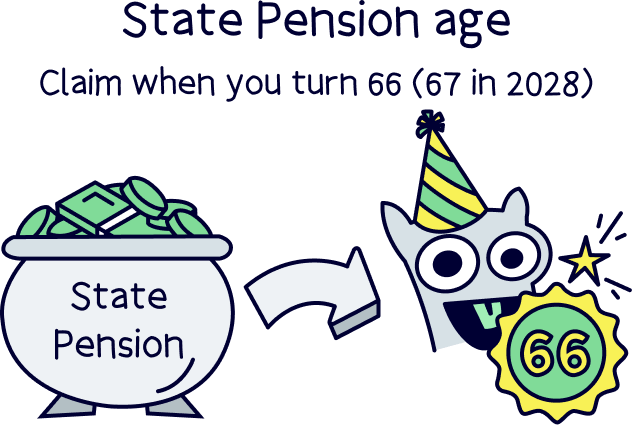
Before now, it used to be 60 for women and 65 for men. Unfortunately the good old days are long behind us now. It’s likely many of us will still be working long after we start taking the State Pension at 66 too.
Note: the Pension Credit qualifying age is the same as the State Pension age. Pension Credits are a benefit you could get if you have very low income in retirement. (Less than the State Pension.)
The State Pension is the pension everyone in the UK gets from the government if they’ve paid enough National Insurance contributions over the years. How much State Pension you’ll get, depends on how many years you’ve paid National Insurance contributions…
You’ll need to pay at least 10 years to get the minimum pension amount and 35 years to get the full amount. You can check this on your National Insurance record.
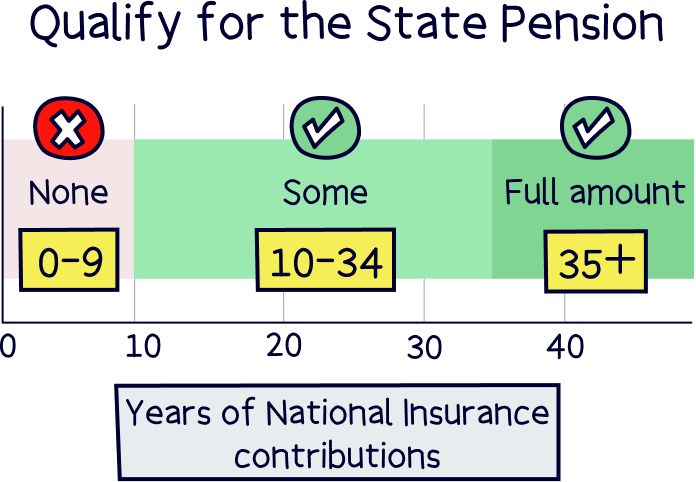
The full amount is currently £230.25 per week, which works out as £11,973 per year. Not that much is it? You’ll likely struggle to live on just this. In fact, it's over half of the minimum wage and less than the recommended minimum income for a retirement (we’ll cover this below).
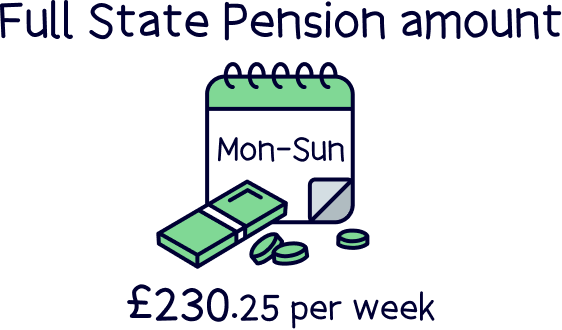
To boost your pension savings and increase your retirement income, we strongly recommend using a private pension too – we’ll cover these in detail below.
Boost your pension pot with a personal pension – you’ll get a 25% bonus on everything you pay in too.
When it comes to private pensions, the retirement age is currently 55, but rising to 57 in 2028. This includes your workplace pension and personal pensions (again, explained below).
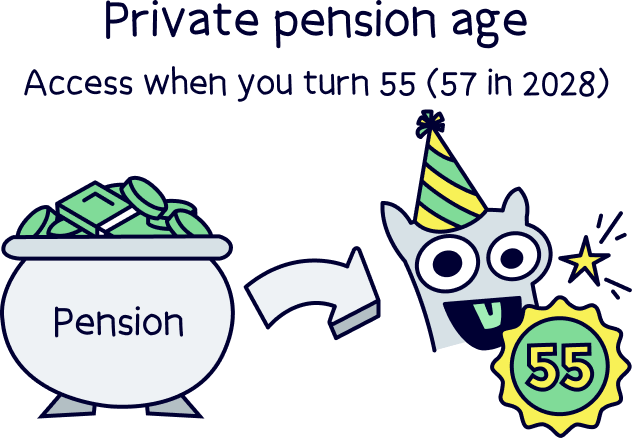
We say retirement age, but really it simply means you can start withdrawing cash from your private pension if you want to.
We at Nuts About Money recommend you don’t withdraw it if you don’t need it (until you retire). If you leave it for longer (and keep paying in), it will grow much bigger, meaning you’ll have a much bigger income in retirement! We’ll cover how to boost your pension later too.
When you do withdraw it, the first 25% of your pension withdrawals are also completely tax-free. And, you can take this as a tax-free lump sum if you like (sometimes people do this to pay off their mortgage). Alternatively, if you don’t take it as a lump sum, then the first 25% of each withdrawal will be tax-free.
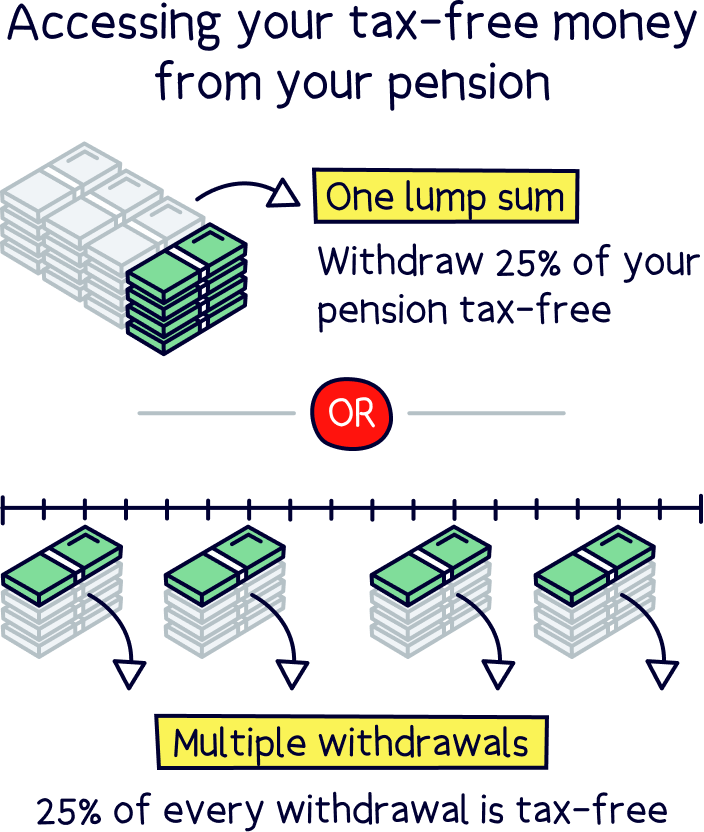
The remaining 75% is then liable for Income Tax – which is the same as your salary (your pension kind of becomes your income), however you’ll still be eligible for your Personal Allowance, which is the first part of your income that’s completely tax-free. This is currently £12,570. So you might not end up paying too much tax when you retire.
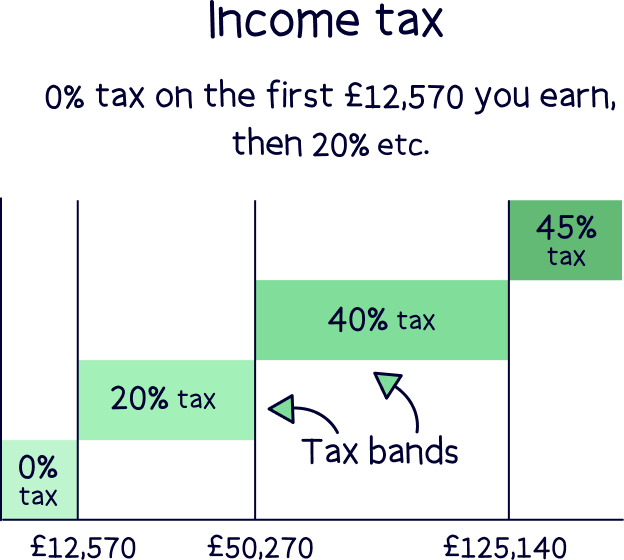
A private pension is a pension that’s all yours – it's your money, not the governments. That means you decide how much you want to pay into it, and when to withdraw from it (when you’re over 55).
To confuse you a little, there's a couple of different types of private pensions, a personal pension and a workplace pension. If you’re employed, you’ll probably be familiar with a workplace pension, but a personal pension is great too!
If you’re employed, you’ll likely have a workplace pension set up for you by your employer as part of the auto-enrolment scheme. If you pay at least 5% of your salary each year into your pension, your employer will contribute 3% too (by law). For that reason they’re pretty great.
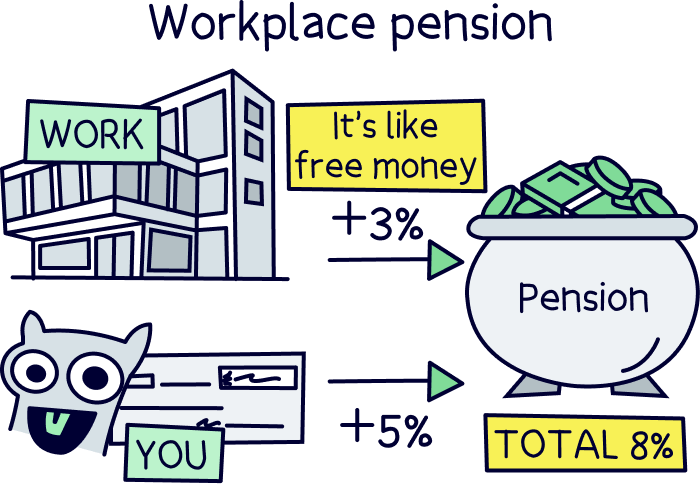
Your contributions are also paid into your pension before you pay tax too – so they’re completely tax-free. You can see this in your payslip.
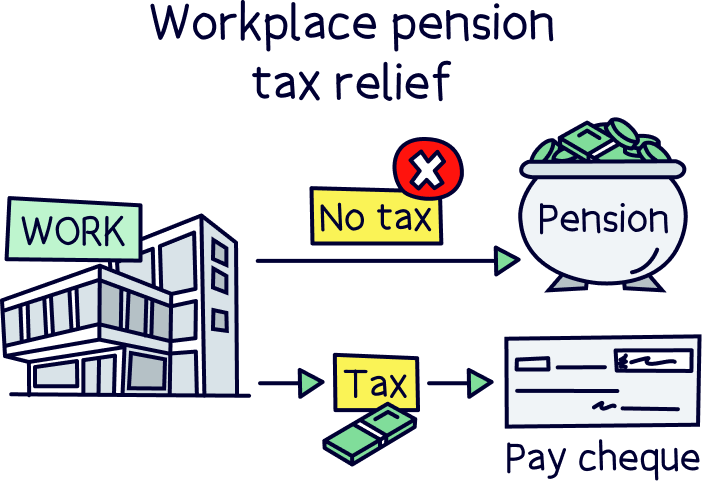
A personal pension is a pension that you open yourself – and these are a great addition to your workplace pension, or if you’re self-employed, your only pension option to save for retirement (but it’s a great option).
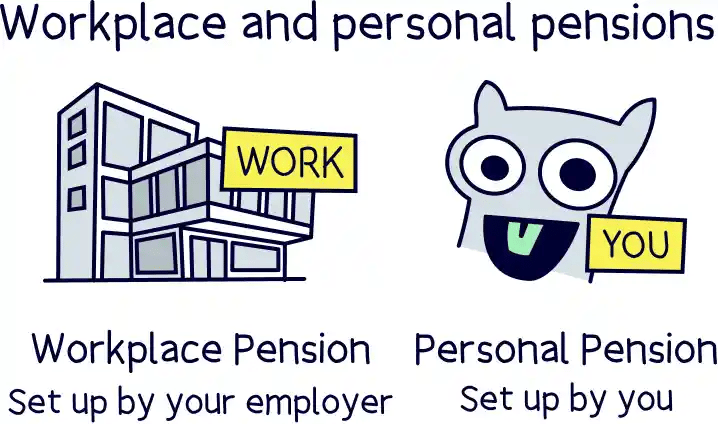
If you are self-employed, here’s our guide to self-employed pensions and how to set yourself up with a great pension provider. If you’re a contractor, check out our guide to contractor pensions too.
With a personal pension, you’ll also be able to save tax-free, it just works a bit differently…
Instead of your contributions coming out of your salary before tax like workplace pensions, when you pay into a personal pension, you’ll have already paid tax on your income – and so you’ll get this tax refunded straight back into your pension as a 25% bonus. It feels like getting free money every time you pay in!
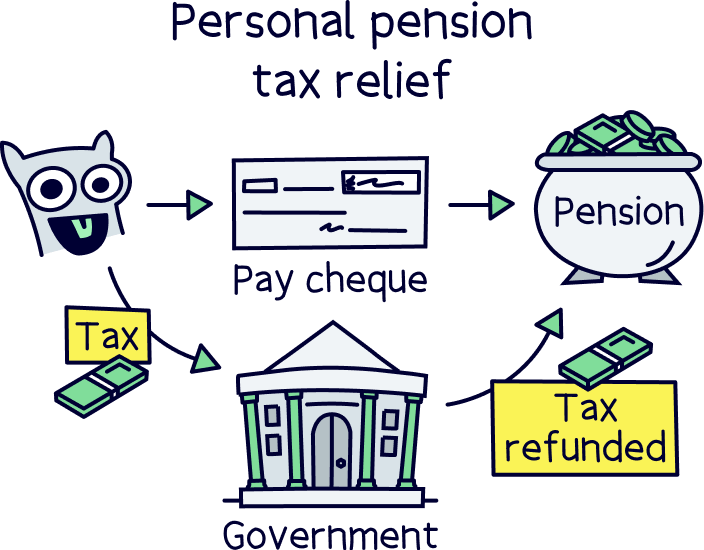
And, if you’re a higher rate taxpayer (paying 40%), or an additional rate taxpayer (paying 45%), you can also claim back some of the tax you’ve paid at these rates too. You’ll do this on a Self-Assessment tax return.
Plus, the great thing about personal pensions is that you get to choose which pension company (provider) you want to use – which means you can pick one that’s easy to use, has low fees and a great track record of growing money over time.
If you’re interested in learning more, here’s the best personal pensions. As a spoiler, PensionBee¹ comes out top, they’re all of the above, rated 5* and highly recommended. Here’s our PensionBee review to learn more.
Although you’ll likely get a State Pension if you’ve worked for most of your life – it’s likely not going to be enough to live off. We highly recommend not only saving into a workplace pension, but if you can, save into a personal pension to boost your total pension savings further.
How much you’ll need in a pension can fall broadly into 3 categories – official categories set out by the Pension and Lifetime Savings Association, called the Retirement Living Standards. These are minimum, moderate and comfortable:
If you’re interested, here’s the actual retirement income figures for each category:
It’s also worth bearing in mind that these figures don’t include rent or mortgage payments, it assumes you had a mortgage and that it’s been paid off by the time you retire. So you’ll need to add this on top if you think you’ll be paying them. Plus any other additions such as an expensive golf membership.
So, to get the retirement income you’d like, here’s how much you need in your pension pot:
You'll need to save less if you're going to get the State Pension.
You'll need to save more if you're NOT going to get the State Pension.
Confused? Let’s explain that a bit more…
To earn a pension income of £13,400 per year in retirement, you’ll need to have saved £88,958 within a private pension, if you also expect to get the State Pension.
If you don’t expect to get the State Pension, you’ll need to have £348,295 in your private pension.
Quite big figures aren’t they? Don’t panic just yet, with the right savings strategy for your pension, you’ll be able to get your pension pot to a big figure! And here’s how:
The key to building a big pension pot is regular contributions and time! It sounds simple, but with everything going on in life, it can be difficult – but that’s why we’re here at Nuts About Money, to help make things simpler for you.
With pensions, over time, your money will grow and grow thanks to something called compound interest. That’s where as your money makes money (like interest), the money it makes also begins to make money, and this snowballs over and over, called compounding, and it’s how small amounts can grow to really big amounts over time.
As a quick example, let’s say you have £50 and it increases by 10% in a year (£50), you’ve now got £550. And now the next year it also increases by 10%. You’ve now made £55, rather than £50. Pretty great right? And the next year, you’ll earn £60.50 (10% of £605), and this snowballs over and over.
Now imagine you earned £33,000 per year (the average salary in the UK), and already had a pension pot worth £10,000. You also pay 8% per year into your pension (5% from you, and 3% from your employer), which works out as £220 per month.
If your pension grew by 7% per year, over 25 years, you’d have a pension pot worth £235,470. Pretty great. And if you kept your pension pot growing further, after another 10 years, you’d have a massive £511,294.
The year after that, you’d actually make £35,791 from your pension – which is more than your salary. Can you see how great compound interest is now? And why saving into your pension early can really pay off.
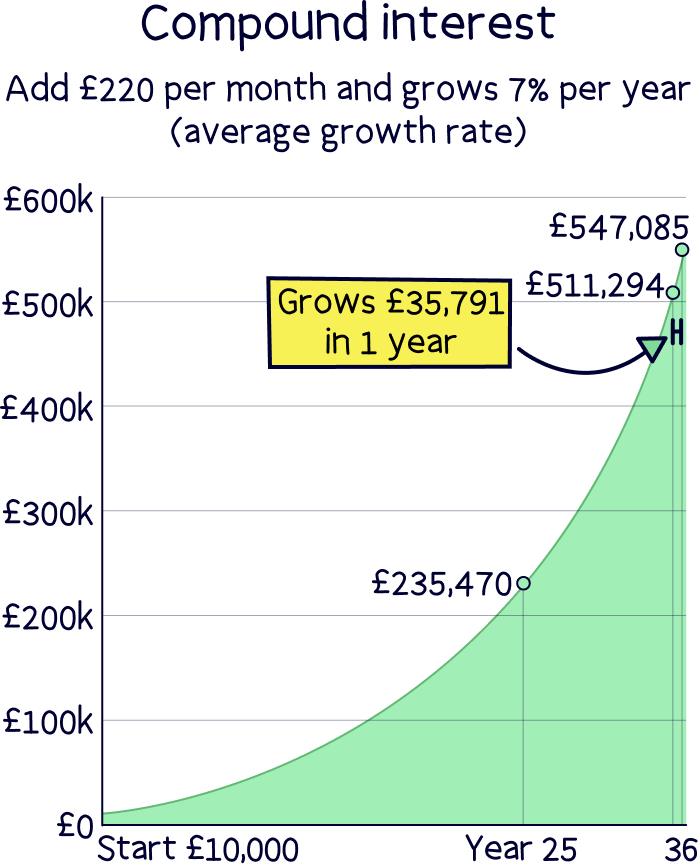
Your money makes money thanks to the experts who look after your money when you save into a pension. Your money is pooled together with other people's pensions, into something called a pension fund. The experts then manage this pension fund and aim to grow it safely and sensibly over time – and they’re very good at it.
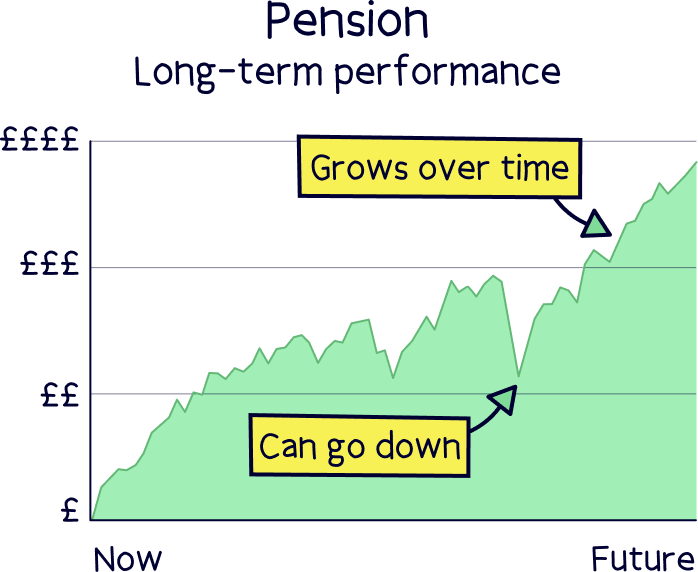
So, the longer your pension remains invested, the bigger you can expect it to grow – and if you keep making more contributions each month, it can grow much bigger, far quicker. You really can build a pension pot big enough to give you the retirement you’d like.
If you can afford to spare a bit more each month, it can really make a difference to your total pension pot by the time you retire. Here’s the best strategy for increasing your pension contributions:
If you have a workplace pension, and you have a kind employer who will pay more into your pension when you pay more in, it’s a great idea to take them up on this offer – it’s basically a pay rise!
If your employer doesn’t offer this, don’t worry, not many do! The best option is to open a personal pension. We covered these above, and it’s a pension that you open yourself and manage (don’t worry it’s super easy) – that simply means you decide which pension provider you use and how much you’d like to pay in each month.
The great news is you’ll get a 25% bonus on your contributions every time you pay in! This can have a huge impact on your total pension pot by the time you retire.
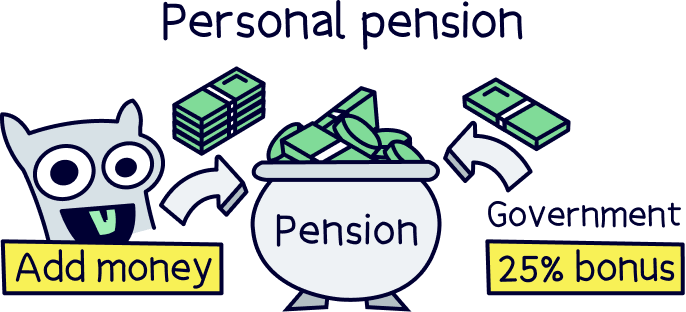
And because you get to decide which pension provider you use, you can pick the best one for you. One that’s easy to use, has low fees and a great track record of growing money over time.
If you’re not sure where to look, here’s the best personal pensions, and the top 3 below.
Get £50 added to your pension



PensionBee is our recommended provider – they’ve thought of everything.
Their 5 star rated app (and website) makes it easy to set up and use. You can open a brand new pension, or transfer your existing pensions across (they’ll handle all the paperwork).
Simply pick from an easy to understand range of pension plans, and that’s it, the experts manage everything from there.
It’s low cost, with one simple annual fee. The customer service is excellent, and you’ll get a dedicated account manager for any questions you might have.

And, when the time comes to retire, withdrawing from your pension is easy too.
You can also use them if you're self-employed or a company director.
Great app



A great and easy to use pension. Add money from your bank or combine old pensions into one, (they’ll find lost pensions too).
The customer service is excellent, with support based in the UK.

Beach is an easy to use pension app (and easy to set up), where you just add money and the experts handle everything. It’s all managed on your phone with a great app, and you can see your total pension pot whenever you like.
If you’ve got lost or old pensions, Beach can also find them and move them over too, so you can keep all your retirement savings in one place, and never have to worry about losing them in future.
You’ll get an automatic 25% bonus on the money you add to your pension pot from your bank account (tax relief from the government), which refunds 20% tax on your income, and if you pay 40% or 45% tax, you’ll typically be able to claim the extra back too.
The pension plan (investments) are managed by experts, who are the largest investment company in the world (BlackRock). And they consider things like reducing climate change, meaning your savings could make the world a little better in future too.
You can also save and invest alongside your pension with an easy access pot (access money in around a week), designed for general savings, with the investments managed sensibly by experts too. And money made can be tax-free within an ISA.
Fees: a simple annual fee of up to 0.73% (minimum £3.99 per month).
Minimum deposit: £25
Customer service: excellent
Pros:
Cons:
Boost your pension pot with a personal pension – you’ll get a 25% bonus on everything you pay in too.
If you’ve had lots of jobs, and got lots of pension pots all over the place from old employers, it’s often a good idea to combine these into a new personal pension, called consolidating your pension.
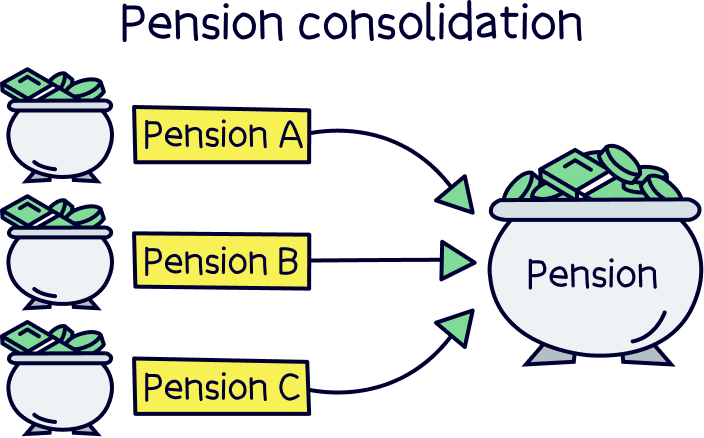
This means you won’t forget about them when you retire – often pension providers won’t get in touch with you later down the line, they’d rather keep your pension and keep charging you fees.
And with a modern pension provider you’ll always be able to keep track of your pension, and have an up-to-date view of your pension pot, plus easily make contributions – all thanks to the great mobile phone apps they have (and websites).
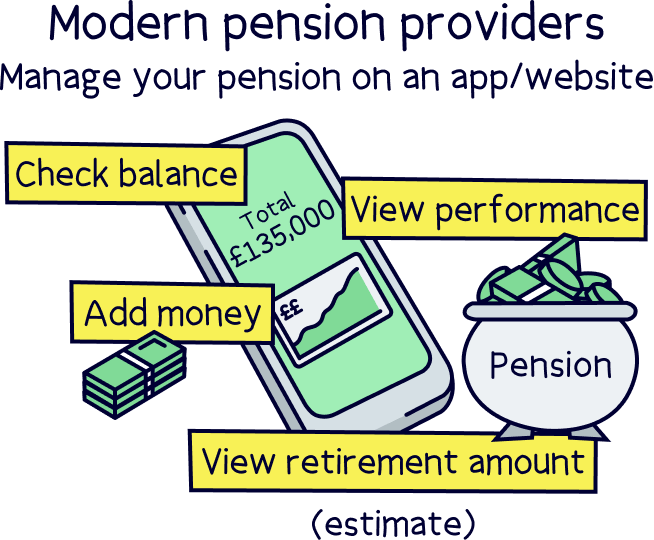
The other great thing with the best pension providers is that the more you have saved with them, the lower fees they’ll charge (the best ones are already low cost). This means your money can grow even bigger over time.
Plus, a decent pension provider with a great track record of growing money over time is often a good bet they’ll continue with the good performance. The difference between a good pension provider and a bad one can again have a massive impact on your total pension pot by the time you retire. This is because of that compound interest we talked about earlier.
The good news is it’s super easy to consolidate your pension, in fact, you don’t need to do much. All you need to do is tell your new pension provider the names of your old pension provider(s), and they’ll handle everything for you. Your old pensions will simply turn up in your new pension. As simple as that!
Check out the best pension providers to find our recommendations for great providers who make consolidating pensions easy.
Hopefully you’ll have a nice big pension pot by the time you retire, thanks to saving in a private pension (personal pension) and having worked at least 35 years to get the full State Pension.
With the State Pension, you can apply to get this once you reach retirement age, which is currently 66 but rising to 67 in 2028. Although you can actually decide to defer this if you want to keep working, and when you do decide to retire, your weekly payments will actually increase.
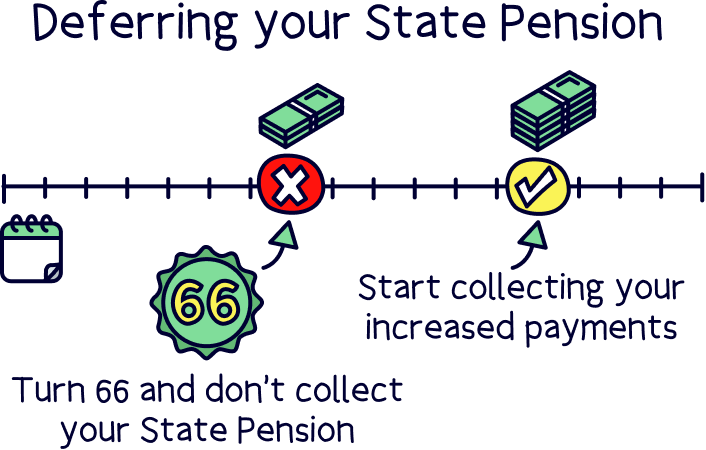
And with a private pension, you can start taking this any time after you’re 55 (57 from 2028), however it’s often best to keep this growing until you retire so it keeps growing.
So, when you do retire, you’ve got 2 options with your private pension. You can either use your pension pot to buy an annuity, which is a guaranteed income each month for the rest of your life (or a set number of years). Or, you can simply leave your pension where it is to keep growing and simply take money out of your pension however you’d like (e.g. monthly).
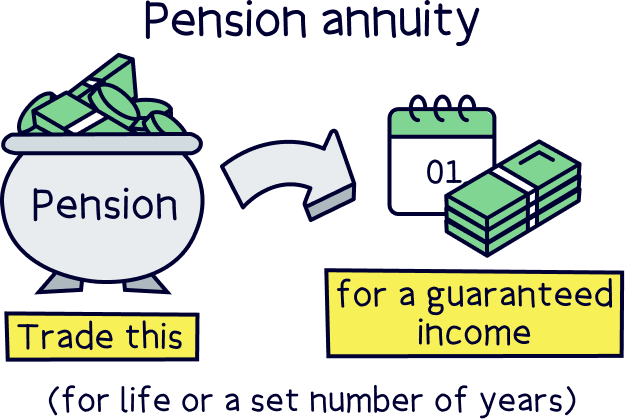
Your pension provider should cover your options when you do retire, but it’s also a good idea to speak to a financial advisor about retirement planning. You can find a good one for you with Unbiased¹.
We hope that’s given you a bit more information on your pension. There’s no forced retirement age these days, but there are retirement ages for pensions…
The official State Pension age (retirement age for the State Pension) is currently 66, but rising to 67 in 2028 and later increasing to 68. This means you’ll get the State Pension when you reach State Pension age.
With private pensions, such as a workplace pension and personal pension, the retirement age is 55, but rising to 57 in 2028. Although it’s not really a retirement age, it’s just the lower limit on when you can take the cash out if you want to – although we strongly recommend keeping it in your pension until you decide to retire, so it can keep growing bigger and bigger!
We also recommend you aim to build a big pension pot if you can, as you’ll likely struggle to live off just the State Pension, and even with the addition of a workplace pension.
To have a comfortable retirement, you’ll need around £43,900 per year from your pension, which means you’ll need a total pension pot of around £881,719 (including receiving the State Pension). That’s a lot, but it is possible with increasing your pension contributions (and time).
To increase your pension contributions (and to best grow your pension pot) we recommend opening a personal pension. Unlike a workplace pension, you’ll be able to pick the best provider for you, one that’s easy to use, has low fees and a great track record of growing money over time.
Not sure where to get started? Here’s the best pension providers. PensionBee¹ comes in top, they’re all of the above and 5* rated. Meanwhile, Beach¹ is also super simple to use and has an easy access pot alongside a pension, for everyday savings (access the money in around a week).
Good luck saving – your future self will really thank you!
Boost your pension pot with a personal pension – you’ll get a 25% bonus on everything you pay in too.
Boost your pension pot with a personal pension – you’ll get a 25% bonus on everything you pay in too.
We’d love to hear from you, and it will help others too.
Boost your pension pot with a personal pension – you’ll get a 25% bonus on everything you pay in too.